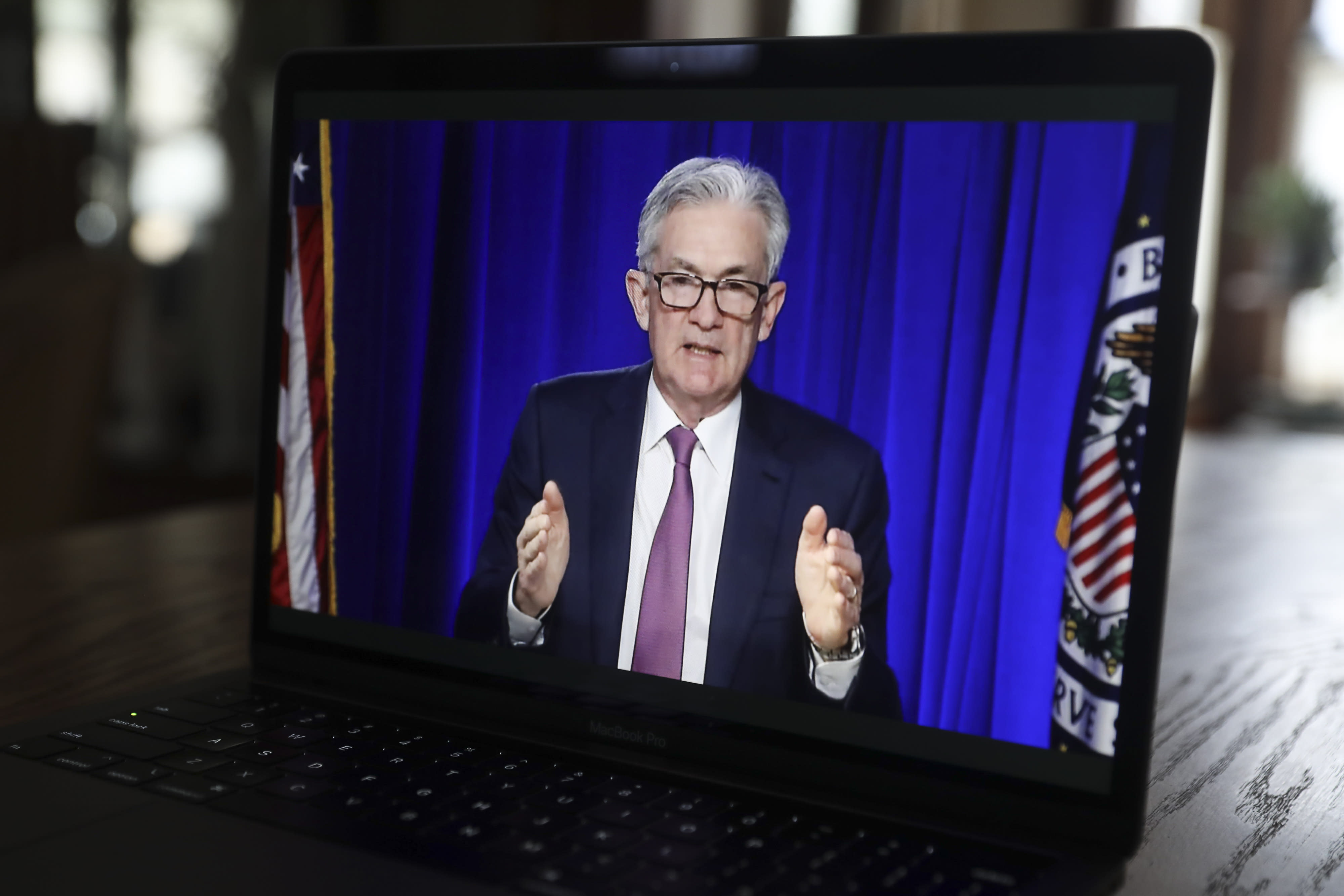
Federal Reserve Chairman Jerome Powell speaks at a virtual news conference in Tiskilwa, Illinois, on Dec. 16, 2020.
Daniel Acker | Bloomberg | Getty Images
Merriam-Webster’s Dictionary defines “transitory” as “of brief duration,” while Oxford Languages defines it even more simply: “not permanent.”
It would appear the bond market views inflation as “transitory,” as measured by the recent plunge in 10-year Treasury yields.
Last week, the yield slipped as low as 1.25% — slumping to its lowest levels since February.
We’re seeing global yields fall, as well, suggesting a few things:
- Inflation has peaked.
- The rate of economic growth has peaked at home and abroad, as well.
- Investors, of all stripes, foreign and domestic, are offsetting their exposure to global equities by purchasing high quality Treasuries to provide ballast in their portfolios.
- The spread of the Covid delta variant may slow global economic growth if it continues unchecked among the unvaccinated.
It’s really not that hard to understand why yields are falling. Peak inflation alone is already a good enough reason to own bonds or some Treasury bond proxy.
Both five- and 10-year inflation “breakevens” — a bond market measure of inflation expectations — peaked on May 17.
Lumber, the commodity which skyrocketed this year to levels never seen before, has fallen more than 50% from its all-time high. Copper, too, has declined, along with other agricultural commodities.
China has been dumping all kinds of commodities to help bring the price of “stuff” down, while tightening credit and hammering big businesses at home … not the stuff that global growth is made of.
Oil, of course, is at its highest level in years. That is a source of inflation, but also a source of pain for consumers who may drive or fly less as the cost of travel goes up. That can slow an economy more than it can ignite inflation these days.
The bond market had a bit of an inflation tantrum early this year as 10-year note yields approached 1.8%, with many economists and strategists predicting an immediate run to 2% or higher.
I was among them, believing that fiscal policy was about to become even more expansive than it had already been, coupled with historically easy money policies from the Fed, neither of which had any end in sight.
But even those expectations have been tamped down as the current infrastructure proposal circulating in Washington is about half the size of the Biden administration’s original proposal.
Meantime, the fiscal 2022 budget may never come near the reported $6 trillion request envisioned by the White House.
Hence, inflation may well be “transitory,” just as the Federal Reserve has maintained all along.
One can make the case for rising inflation and rising rates all day long, irrespective of the fact that financial market indicators are now making a very strong case for a bout of inflation that is simply not permanent.
I trust the message of the bond market implicitly. It is among the most sensitive markets in the world, often figuring out coming economic changes long before other markets realize the world is rapidly shifting.
Famed economist John Maynard Keynes said it best, “When the facts change, I change my mind. What do you do, sir?”
—Ron Insana is a CNBC contributor and a senior advisor at Schroders.
Become a smarter investor with CNBC Pro.
Get stock picks, analyst calls, exclusive interviews and access to CNBC TV.
Sign up to start a free trial today.




